

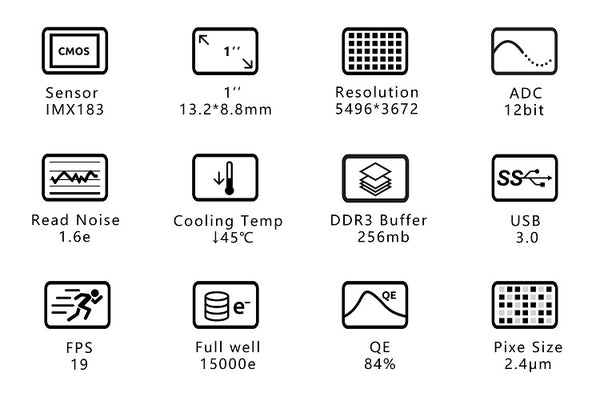
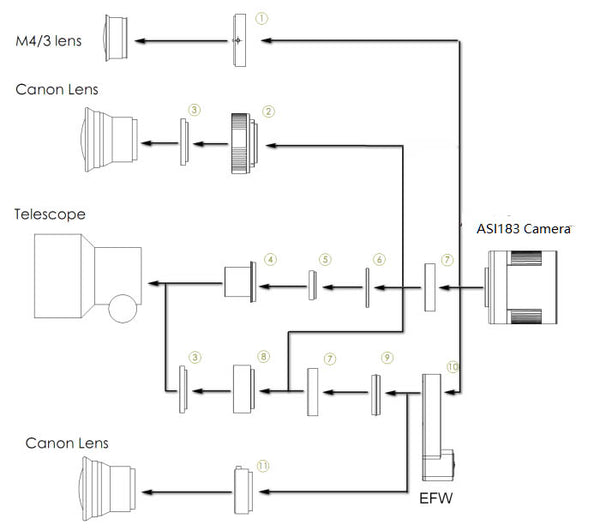
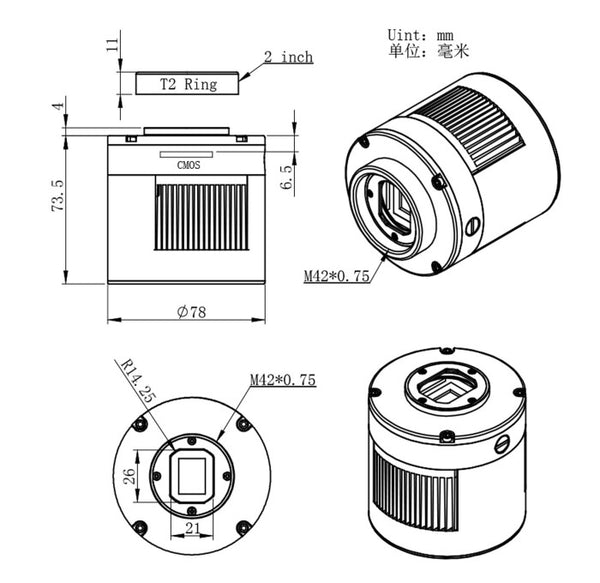
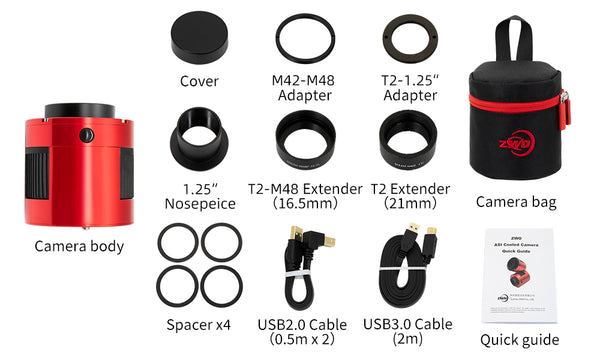
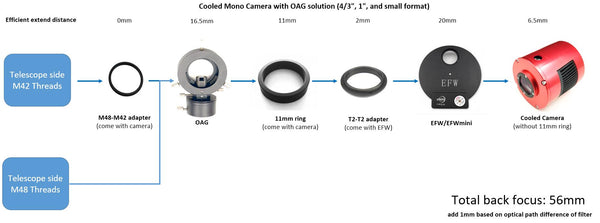







Why Purchase from All-Star Telescope?
Free Expert Support
Whether you are a first timer needing help with setting up or an enthusiast that can't quite make that one thing work, our expert staff are ready to support your needs. With decades of knowledge and first hand experience we've been there and we can help you through it!
Stress Free, Secure Transactions
You can trust purchasing and delivery with All-Star Telescope. All of our transactions are 100% secure and Level 1 PCI DSS compliant thanks to Shopify's ShopPay platform. For additional protection, we insure 100% of the value of every shipment we make. If it get's lost during shipment, we replace it. If it gets damaged during shipment, we replace it. We make sure your product arrives exactly as you would expect it to; we promise.
We also ensure privacy protection. We never keep any of your credit card information on file and any of your personal data is stored according to our policies.
30 Day Return Policy
Buy with confidence knowing that we accept returns up to 30 days after purchase. We want you to have something you will actually use and we are confident that we keep good quality products in our store with No Junk.
Price Match Promise
Shipping around for the best price is tough, we make it easier by offering the best pricing in the market. But if you find a better price on an in-store item somewhere else we will match it!
Product Description
ASI183MM Pro uses Sony’s IMX183CQJ-J sensor. With a high QE-value and low provides excellent image quality at an affordable price.
Sony IMX183CLK-J/CQJ-J Sensor
This back-illuminated, rolling shutter-type CMOS sensor has a diagonal of 15.86 mm and approximately 20.2 megapixels.
High-Speed and High-Picture-Quality Rolling Shutter-Type Back-Illuminated CMOS Image Sensors
Designed for astrophotography, the Sony IMX183CLK-J (monochrome) and IMX183CQJ-J (colour) sensors use high-sensitivity back-illuminated structures with high resolution 2.4 μm square pixels. The optical size is 1 inch.
Some of the features include:
- 20 megapixel sensor with 2.4 μm pixel size. – able to capture19 frames/s frame rate in 12-bit mode with high detail.
- Very low 6e- readout noise – bringing out more details in your images with improved dynamic range.
- Full-well capacity of 15ke– – reduces the risk of oversaturated stars in longer exposures.
DDR Memory Buffer
The ASI183 Pro camera includes a 256MB DDR3 memory buffer to help improve data transfer reliability. Additionally, the use of a memory buffer minimizes amp-glow, which is caused by the slow transfer speeds when the camera is used with a USB 2.0 port.
Astrophotography Performance
The ASI183 cameras has an impressive list of characteristics suited for astrophotography including a large full well capacity of 15000e-, small pixel size, 1.6e read noise @ 30dB, and 12stops dynamic range @ Gain=0. The ASI183 cameras also utilize firmware features to minimize amplifier glow for maximum performance in astrophotography.
Reliable Mechanics
ASI183 Pro has same mechanics as ASI1600 Pro. There are four screws that seal the sensor chamber. Our camera design has been extensively tested and is very stable even in demanding environments.
Even when used in environments with higher humidity, ASI183 Pro will still work fine without dew problems.
High Speed
Fast FPS and high-speed readout come in handy for many applications in astrophotography such as in:
- solar and lunar imaging,
- as well as for live viewing or electronically assisted astronomy (EAA)
- real-time focusing,
- true lucky imaging of double stars and other small objects,
- planetary imaging of the major planets in the solar system, and much more.
- Notice: After receiving user feedback, it has been brought to our attention that this IMX183 sensor has grid pattern noise when doing Ha solar imaging. To alleviate this issue, please take flat frames for calibration (out of focus or add a Barlow lens to take flat frames). We recommend our ASI1600/ASI174 mono camera for Ha solar imaging.
High QE
Sony’s back-illuminated Exmor R technology, giving it excellent Deep Sky performance. ASI183 QE peak reaches a respectable 84%. In Ha channel, QE is still over 60%.
Having high QE means that more of the light that enters your telescope and reaches the sensor is actually used. With 84% peak Q.E. and no less than ~50% within the visible spectrum, the ASI183 will utilize a high percentage of the light that reaches it, improving your signal quality.
Dark Current
The dark current of the ASI183 is extremely low, based on our test results.
USB 3.0 Port & USB2.0 HUB
USB 3.0 Port: Provide 5Gb bandwidth to make it possible for ASI183 Pro to run at 19 fps (12bit, normal mode) or 19 fps (10bit, high speed mode) at full resolution(20.18Mega).
USB 2.0 HUB: can connect with various accessories, such as filter wheel, guide camera and electronic focuser, so you can better manage your cables. The ASI183 Pro includes two short 0.5m USB 2.0 cables. The integrated USB 2.0 hub is powered by the external power source if you connect one.
Cooling System
Thanks to the two stage TEC cooling, ASI183MC Pro can lower the sensor temperature to more than 35 degrees Celsius below ambient temperature, which can greatly reduce dark current generation and sensor noise even during extended exposure times.
*The Delta T 35℃ is tested at 30℃ ambient temperature. It might get down when the cooling system is working for a long time. Also, as the ambient temperature falls, the Delta T would also decrease. Please notice that the camera needs to be connected to an external 11-15v power supply to implement the cooling function. We recommend you use 12V@3A DC adapter (5.5*2.1mm, center pole positive) or lithium battery with 11-15V to power the camera.
Connecting Diagram (refer to photo)
- M43-T2 adapter (optional)
- EOS-T2 adapter (optional)
- 2”Filter (optional)
- 1.25” T-Mount
- 1.25” Filter (optional)
- M42-1.25” Filter (optional)
- T2 extender 11mm
- M42-M48 extender 16.5mm
- T2-T2 adapter
- EFW mini(optional)
- EOS adapter for EFW(optional)
Specifications
| Sensor | 1" CMOS IMX183CLK-J/CQJ-J |
| Diagonal | 15.9mm |
| Resolution | 20Mega Pixels 5496*3672 |
| Pixel Size | 2.4μm |
| Bayer Pattern | None |
| Shutter | Rolling shutter |
| Exposure Range | 32µs-2000s |
| ROI | Supported |
| Read Noise | 1.5-3.0e |
| QE peak | 84% |
| Full well | 15ke |
| ADC | 12bit |
| DDRIII Buffer | 256MB |
| Non-volatile memory/On camera storage | Build-in total 192K byte user-accessible space(image size up to 480X320) |
| Interface | USB3.0/USB2.0 |
| Adaptor | M42X0.75 |
| Protect window | D32-2-AR |
| Dimensions | 78mm Diameter |
| Weight | 410g |
| Back Focus Distance | 6.5mm |
| Cooling | Regulated Two Stage TEC |
| Delta T | 40°C-45°C below ambient |
| Camera Power consumption | 650mA at 5V |
| Cooler Power consumption | 12V at 3A Max |
| Working Temperature | -5°C—45°C |
| Storage Temperature | -20°C—60°C |
| Working Relative Humidity | 20%—80% |
| Storage Relative Humidity | 20%—95% |
Additional Articles, Videos, and Links
External Links
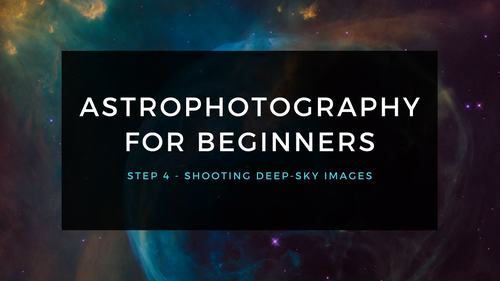
Astrophotography for Beginners Step 4: Shooting Deep-Sky Images
Taking deep sky pictures can be daunting, luckily there is an easy process to follow to allow you to get great shots! Here is the typical process for actually taking deep-sky images in the field.

Astrophotography for Beginners Step 3: Choosing Gear for Deep-Sky Imaging
Using a star tracker gains you experience with the fundamentals of deep-sky imaging. Shooting the Moon gains you experience focusing and framing through your telescope. Through your sessions you’ll...

Astrophotography for Beginners - Start Here: Getting into Astrophotography Step by Step
Shooting the night sky has never been more popular, nor easier. The choice of equipment has also never been better, or more affordable. However, as per the advice given by Dickinson and Dyer in the...
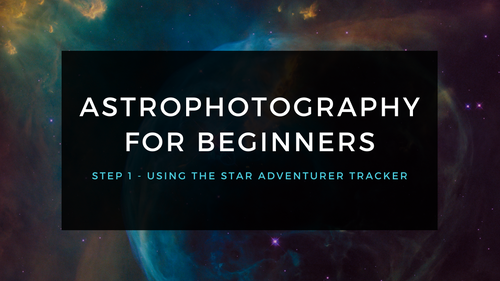
Astrophotography for Beginners Step 1: Using the Star Adventurer Tracker
By far the most economical and easiest way to capture beautiful images of the Milky Way and large deep-sky objects like the Andromeda Galaxy (shown here) is to use a star tracker. Here are steps an...

Astrophotography for Beginners Step 2: How to Shoot the Moon
Close-ups of the Moon are rewarding, and an easy way to learn to shoot through your telescope. While good results are possible with a phone camera clamped to an eyepiece (as shown below), this tuto...


